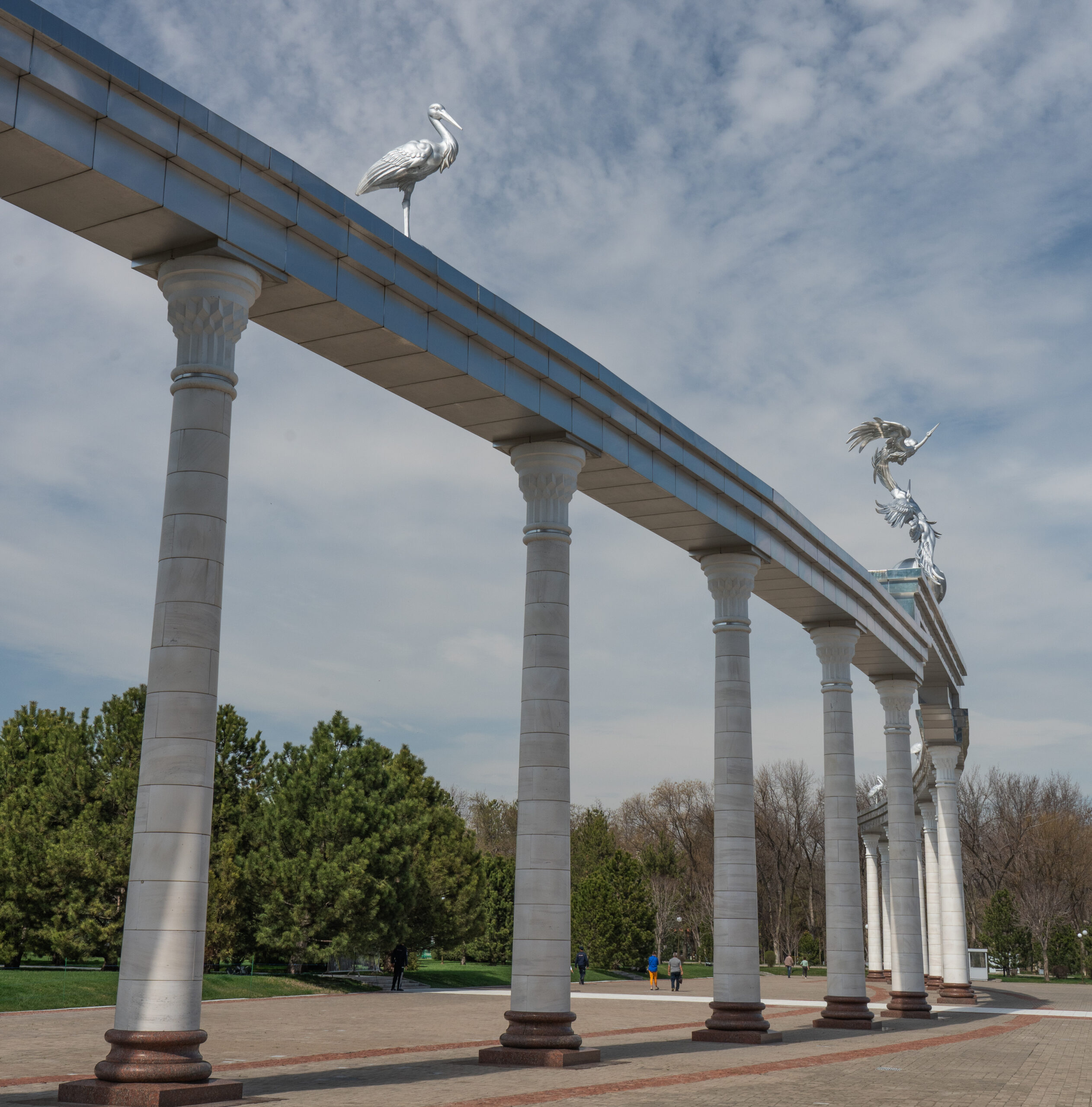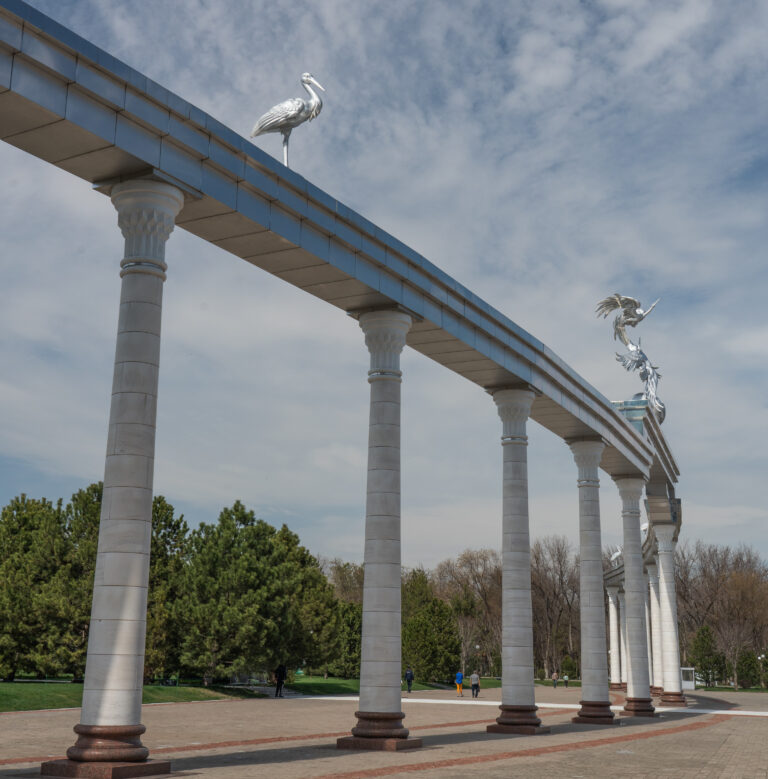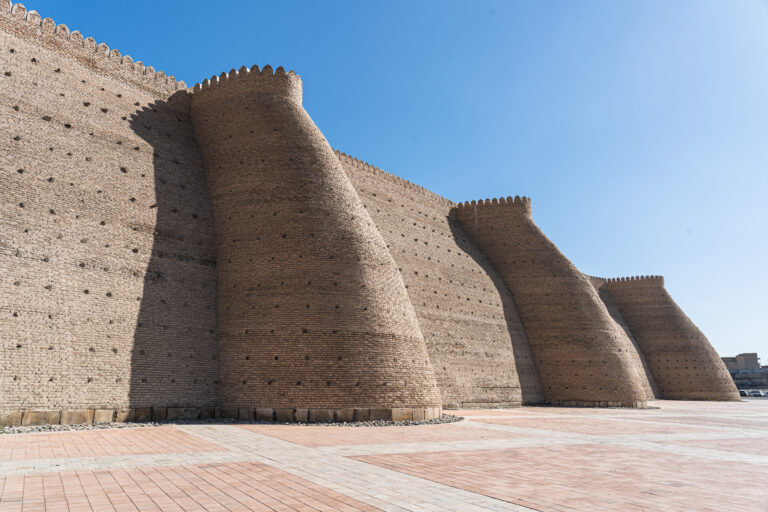Uzbekistan
The name Uzbekistan is still unfamiliar to many. However, its city of Samarkand conjures up images of ancient Silk Route caravans entering an exotic oasis abound with spices, silks, and imposing architecture. Today those elements still remain true. Other smaller cities such as Khiva and Bukhara have all of those elements too, and in greater concentration.
Geography
Uzbekistan is landlocked and is one of a group of countries in Central Asia, often fondly referred to as The Stans. Uzbekistan is almost the size of Spain; much of its territory is made up of deserts with a scattering of dunes. Its cities hold beautifully restored citadels, palaces, mosques, and madrasahs. In the far reaches of the country are the remains of once important citadels of the Khorezm, as well as the fast disappearing Aral Sea.
Despite the vast areas of desert, agricultural areas near the towns and cities make good use of a canal system to bring water from the country’s two main rivers the Syr Darya and the Amu Darya.
Approaching the border with Tajikistan reveals the striking Fann Mountains which can be seen from various points in the ancient Silk Route city of Samarkand. The most verdant area of Uzbekistan is the Fergana Valley which is easily accessible from Tashkent and leads into Kyrgyzstan.
History
Sogdiana
Much of today’s Uzbekistan was part of Sogdiana, a province of the ancient Persian Empire. The Sogdians were the merchants of the Silk Route during the Middle Ages. The oasis towns of Sogdiana were key to its success and created resting points to revive refresh and replenish stocks on the arduous trading journey between East and West. Many of the foundations of the most important buildings in Uzbekistan were laid by the Sogdians. Today, the capital of Sogdiana is known as Samarkand.
Invaders
The Silk Routes opened up well-trodden paths for invaders to follow. Uzbekistan’s history in the last 2500 years is peppered with alternate invasions from the east and west. The most destructive being Genghis Khan at the beginning of the 13th century and Timur in the 14th century. Between them, the two invading forces looted and destroyed much of what had been built up in the previous centuries as part of the Turko-Persian Khorezm Empire. Fortunately, Samarkand was left standing. Indeed not only did it survive, but it flourished during the reign of Timur who was born in the nearby city of Shahrisabz.
At the beginning of the 16th century the Khanates of Bukhara and Khiva controlled much of Uzbekistan today. The Russians invaded the Khanates of Kokand (in the Fergana Valley), Khiva and Bukhara and absorbed them into the Russian Empire in the 1870s. This saw a period of relative reconstruction in Uzbekistan. Finally, Uzbekistan gained its independence on September 1st 1991. The level of reconstruction of emblematic and ancient buildings since its independence is impressive and clear to see.
Many of the magnificent mosques, madrasahs, mausoleums, and palaces have been reconstructed recently. Little remains of the ancient buildings in their original state.
Click here for a more detailed look at the history of Uzbekistan.
Khiva
Khiva is a marvellous project of sympathetic reform. In recent years, the walled city and the buildings within have been brought back to life using traditional building materials. Throughout this journey I saw many small scale and open-air factories producing mud bricks, an affordable but perhaps not very strong approach to reform. Some of the Uzbeks I met suggested that the lack of a sizeable budget has meant relying on traditional building techniques. If I cast my mind back to when I lived in Oman, many of its incredible 14th to 17th century forts had been reformed at great expense only to look new and demonstrate no sign of architectural sympathy. Perhaps, the lack of budget is actually working to Uzbekistan’s favour!
Khiva is often accused of resembling a museum city. Look from the highest minarets and there is family and home life beyond the touristy centre. It is a spotless city, but who needs disrepair and squalor to convince themselves of authenticity?


Karakalpakstan – Ancient Khorezm Fortresses
Karakalpakistan’s ancient Khorezm fortresses were first constructed between 2500 and 1900 years ago. What remains are the remnants of many Silk Route havens. The outer walls of Toprak Qala show the remains of a fortified city that would have been almost as large as Khiva today. A few of the fortresses have been partially reformed to show how impressive they would once have been.


Bukhara
Recent years have enjoyed the reform and reconstruction of the Bukhara’s most prominent buildings. The ancient buildings are all within walking distance of each other and most have been reformed with great attention to detail. There is exquisite tile work on many mosques and madrasahs.
Bukhara is a renewed Silk Route centre. If you are buying treasures and souvenirs, it is good to remember the history of this area of the world. Not for centuries, but for millennia the goods sold here largely came from outside of the country. Tourists are the new merchants; and they should not be surprised that the silk rugs or silk scarves that they buy, albeit with traditional Uzbek designs, are often made in China.


Samarkand
For many of the empires that have ruled over this area of the world, Samarkand has been the capital city. Despite it falling into disrepair in the 17th century, this has given it a degree of protection and led to constructions on a major scale. It became home to some of the largest and most emblematic islamic buildings in this area of the world, many dating from the Timurid period of the 15th century. Today, it is the country’s second largest city and it embraces a continued development with many sympathetic new developments.


Tashkent
The 1966 earthquake left Tashkent very badly damaged. At the time, Uzbekistan was a part of the USSR. Rebuilding the city was used as an opportunity to showcase Soviet engineering. Perhaps the most impressive of their projects was the metro system which includes ornate pillars and chandeliers in some of the stations.
Tashkent is a busy city that has continued to see large investment in building and reconstruction since its independence in 1991. While much of it is modern, the Hazrati Imam Mosque Complex reveals splendid examples of older islamic architecture which so represent the identity of Uzbekistan.






